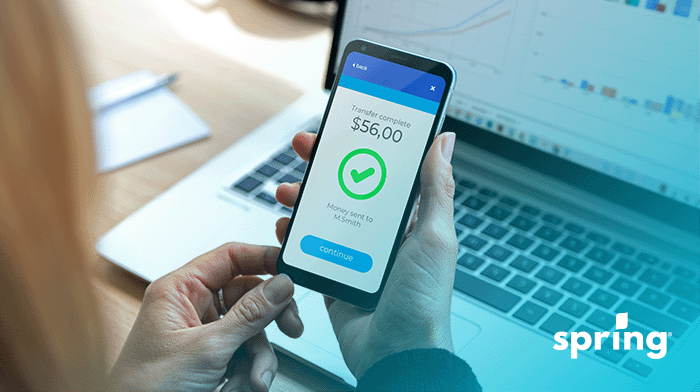Whether you’re an employee or self-employed, this guide breaks down the different work-from-home expenses you can claim and all the new changes to the tax filing process, including the temporary flat rate method recently announced by the federal government.
Reminder: The deadline for filing your tax return is April 30. Self-employed individuals have until June 15 , however, all taxes owed must be paid to the CRA by April 30. Start your tax return today with free tax software. Keep in mind these dates will change if the date specified falls on a weekend, then it will be the next business day.
Here’s everything you need to know about claiming home office expenses on your tax return.
Employee Home Office Deductions
If you’re an employee working from home, there used to be two methods that you could claim your work-from-home expenses. The Temporary Flat Rate Method was created to simplify the process, however, now only the detailed method is available.
Temporary Flat Rate Method
To simplify the claim process, the federal government has introduced a temporary fixed rate method that let taxpayers claim $2 for each day you worked from home, up to a maximum of $500 (250 working days).
When using this method, you did’t need to calculate the exact amount of your home office expenses, determine the size of your workspace, or keep supporting documents like receipts. Your employer also didn’t need to complete Form T2200 or Form T2200S.
Home office expenses you could claim with this method included:
- Rent
- Electricity, heat and water
- Internet access fees
- Basic cell phone plan and long-distance calls for employment purposes
- Office supplies like pens and paper
- Supplies for maintenance and minor repairs (i.e. cleaning supplies, light bulbs, paint)
You couldn’t claim other employment expenses such as:
- Computers, laptops, tablets, cell phones
- Computer accessories like monitors, mice, keyboards, headsets, speakers, etc.
- Office equipment like printers, calculators, briefcases, and laptop bags
- Home office furniture including desks and chairs
- Home phoneline
- Mortgage interest and principal mortgage payments
- Internet connection fees (the portion related to the lease of a modem or router)
- Capital cost allowance
- Capital expenses like replacing windows or flooring
- Motor vehicle expenses
To use this method, you had to meet all the eligibility criteria:
- You worked from home for reasons related to COVID-19, or your employer required you to work from home
- You worked from home for over 50% of the time for at least four consecutive weeks
- Expenses claimed are home office expenses and not other employment expenses
- You weren’t reimbursed by your employer for your home office expenses
Once you have confirmed your eligibility, you needed to fill out Form T777S by inputting how many days you worked from home and multiplying that number by $2. You then put that total on Line 22900 (other employment expenses) on your tax return. That said, though, this method was only available until 2022. As of the 2023 tax year, you have to use the traditional detailed method.
Traditional Detailed Method
The detailed method allows you to claim the actual amounts you paid for home office expenses. It’s best to use the detailed method if you usually worked from home as an employee before the pandemic.
This method is more complicated than the temporary flat rate method and will require calculations and employer documentation, but there’s a good chance your deductions will add up to more than the $400 temporary flat rate method.
You also need to keep all your receipts, invoices, and bank statements for six years in case the CRA wants to verify your claims. It’s important to also know the square footage of the room so you can calculate the appropriate percentage.
To qualify for this method, you must meet all of the following:
- You worked remotely for reasons related to COVID-19, or your employer required you to work from home
- You had to pay for home office expenses that weren’t or will be reimbursed by your employer
- Your expenses were used for work purposes
- Your workspace is where you worked more than 50% of the time for at least four consecutive weeks, or you only used your workspace to earn employment income
- You have a completed and signed copy of Form T2200 or Form T2200S from your employer
If you meet all the eligibility requirements, you’ll need to determine the size of your workspace, the number of hours you use the space for work, and the number of workers in the home. From there, you’ll split your expenses between work use and personal use.
Use the CRA calculator to figure out the employment use portion of your workspace and make sure to review what expenses can and cannot be claimed.
Before filing your taxes, fill out Form T777S (home office expenses) or Form T777 (home office expenses and other employment expenses), and get a completed and signed Form T2200S or Form T2200 from your employer.
On your tax return, put the amount on Line 9368 from Form T777S or Form T777 to Line 22900 (other employment expenses). Remember to file Form T777S or Form T777 at the same time your file taxes. You don’t need to include Form T2200S or Form T2200 so just keep that for your records.
What You Can Claim Using The Detailed Method
Since the detailed method involves way more than the temporary method, there’s more flexibility, which is what you can claim. This is because your employer can specify what they require from you as proof. These items include:
- Electricity
- Heat
- Water
- Utility Portion of Condo Fees
- Internet
- Maintenance
- Rent
Those who are commission-based can also claim home insurance, property taxes, phone expenses, personal expenses and any other costs related to earning a commission.
That said, there are also some expenses that you’re unable to claim. These include:
- Mortgage Interest
- Principal Mortgage Payments
- Internet Connection Fees
- Furniture
- Wall Decorations
- Capital Expenses
Where it gets tricky is if more than one person in a household works from home. Only one person can claim each expense, so it’s important to decide who is claiming each one. If your employer also requires certain office and phone expenses, you can usually claim those as well.
When it comes to claiming the workspace that you occupy in the home, you can only claim it for the whole year if you work from home for the whole year. If you work from home for part of the year, that’s all you can claim since that’s the time period it was used for business use. If you have multiple income sources, you can only claim amounts related to the specific income.
Self-Employed Home Office Deductions
Nothing has changed for self-employed individuals and business owners, so claim home office expenses just like you have in the past.
The CRA allows you to deduct expenses related to your home office space if you meet at least one condition:
- Your home is your principal place of business (not a separate structure like a separate mobile home)
- The space is used to earn business income only, and you use it all the time to meet your clients and customers instead of having a space for exclusive use
Home office expenses include things like:
- Rent
- Property taxes and insurance
- Mortgage interest
- Operating costs like heating and electricity
- Maintenance costs like minor repairs and cleaning supplies
- Capital cost allowances (i.e. computers, printers, furniture, filing cabinets and other office equipment)
Keep in mind you must determine the portion of your home that was used for your business and claim expenses accordingly. You can calculate this by dividing the area of your workspace by the total area of your home.
For example, your home office is 100 square feet, and you live in a 1,000-square-foot apartment. In this case, your allowable portion of home office expenses is 10%. That means if your home office expenses total $15,000, you can only claim 10% of that ($1,500) on Form T2125.
You’ll need to do further calculations if you run a part-time business and use your home office for business and personal activities. The easiest way to do this is to take the number of hours you use the workspace for business purposes in a week, divide it by 168 hours, and then multiply the total by the business portion of your home expenses.
Let’s say you use your home office for 16 hours per week for your side gig.
The calculation would be:
16/168 hours x $1,500 = $142.85 (your total home office deduction)
Common Tax Filing Mistakes
Excessive home office expenses often trigger an audit, so be honest about the size of your home office and the expenses and services that go with it.
Other common mistakes to avoid include:
- Claiming repairs that aren’t related to your home office.
- Claiming full mortgage payments, the principal portion is not deductible.
- Rounding up home office expenses, always add up your receipts and input the exact amounts.
- Putting expenses in one category. Break down expenses and put them in the correct categories.
Don’t Forget About Business Operating Expenses
As a self-employed individual, you’re also able to claim various business operating expenses like:
- Phone and internet (only the portion used for your business)
- Small office supplies like pens, paper, stamps, etc.
- Interest and bank charges
- Advertising expenses
- Accounting and legal fees
- Meals and entertainment
- Start-up costs
- Vehicle expenses
Check out the CRA website for a full list of eligible expenses.
Final Thoughts
When you work from home, home office expense deductions can be a little complicated because you can only claim expenses that relate to employment duties. You’re able to do this because you’re using your own money to pay for expenses that are required in your employment contract.
While the temporary flat rate method made being able to claim home office deductions simpler, the detailed rate method helps taxpayers save more money with this method. However, it’s important to remember that you’re going to need receipts to prove the costs. If you’re unsure, though, it’s best to get help from a tax professional to make sure you’re claiming correctly, especially because these amounts will vary based on the details of your home office and work areas from year to year. If you don’t claim everything though, it could also be possible to claim these amounts in future years.
Related articles
- Top 20 Ways to Maximize Your Tax Return in 2021
- 11 Family Benefits and Tax Tips That Every Parent Should Know
- How to File A Notice of Objection To Dispute Your Tax Return








